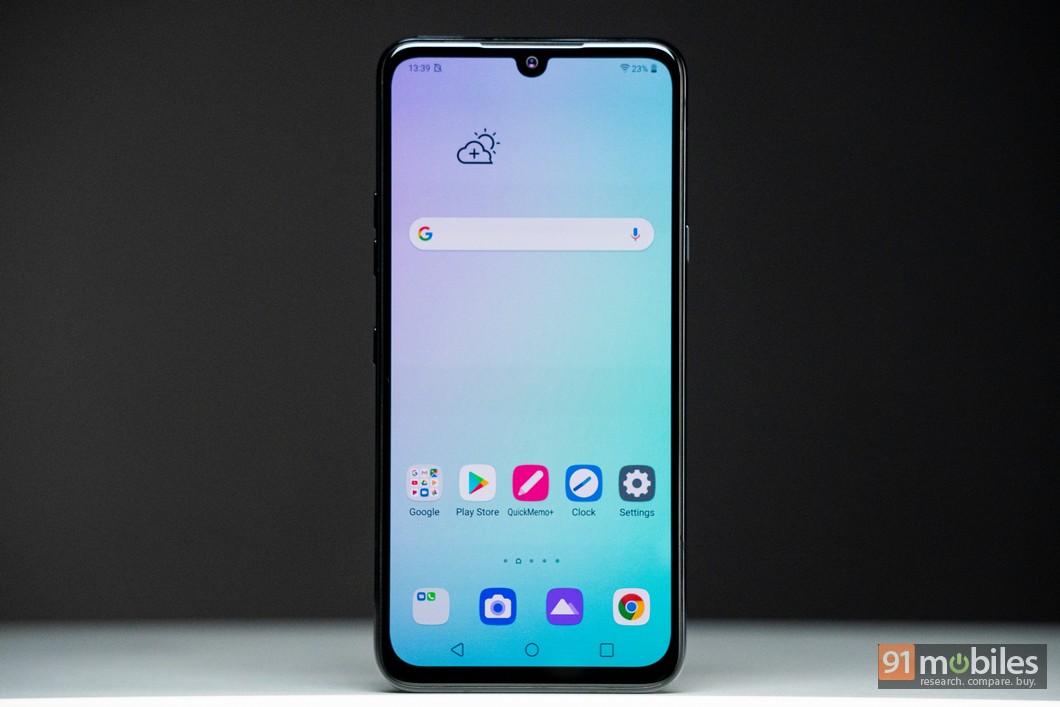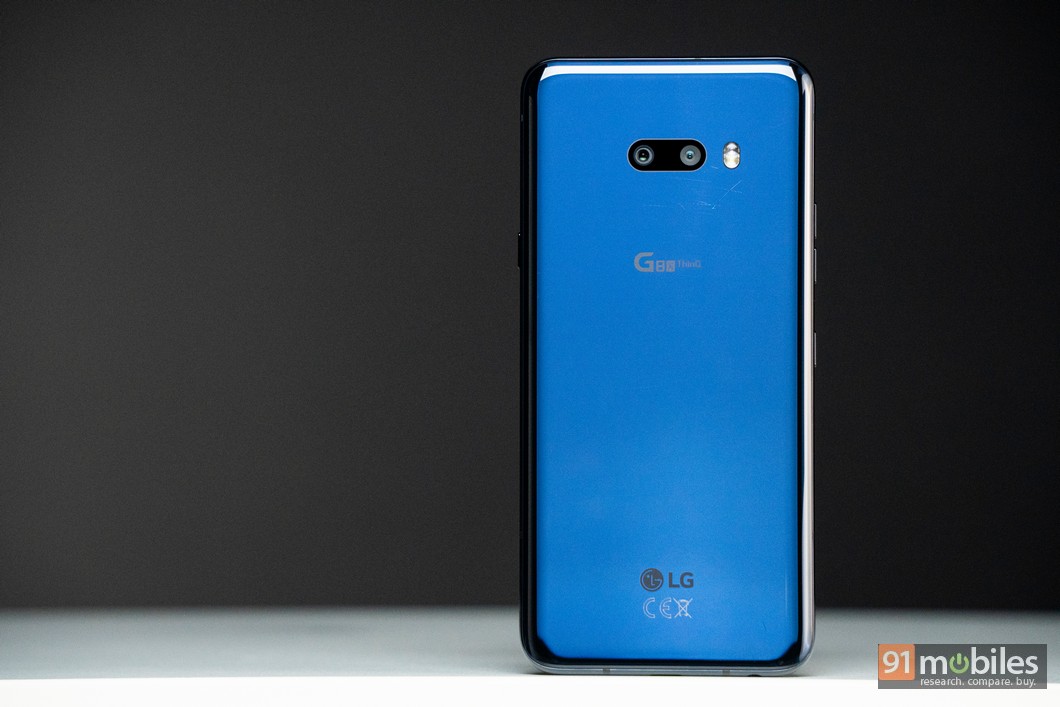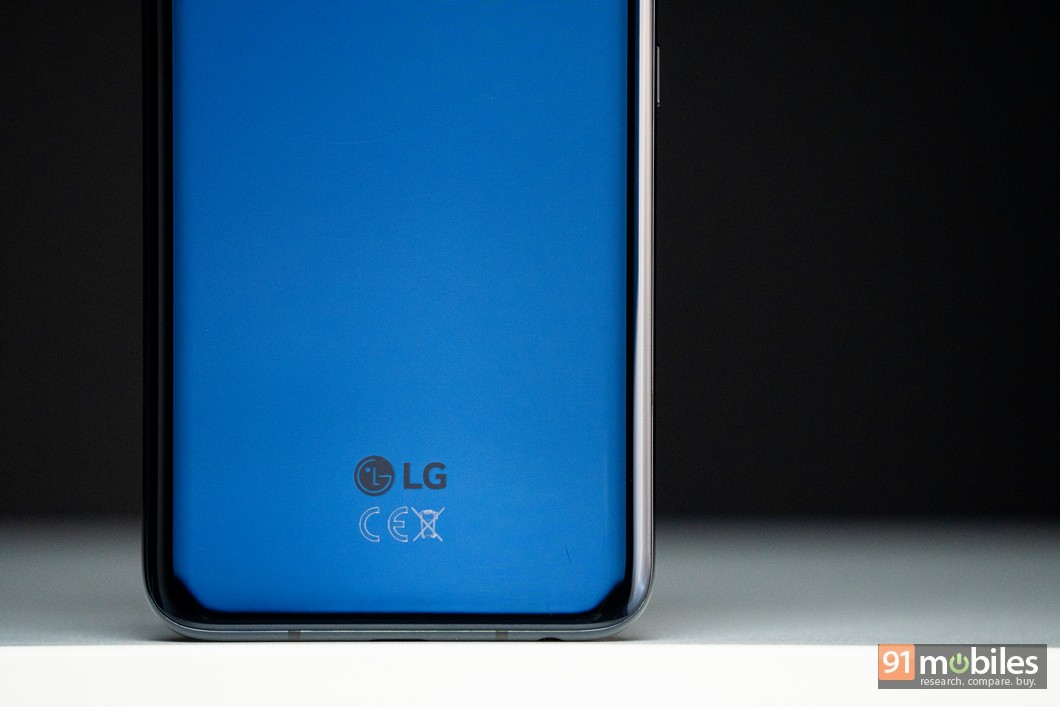For quite some time, the general form factors of smartphones have remained the same. However, the quest for fitting in more screen real estate inside your pocket has been picking up speed as of late. With foldable phones now hitting the market from OEMs such as Samsung and Huawei, it appears that the switch to bendable displays in your pocket is not far. However, given their high price tags, it is safe to assume that these devices will not become mainstream anytime soon. LG, while working on its own foldable smartphone, has come out with a compromise in the form of the G8X ThinQ which could be appealing for a number of use cases. At a price of Rs 50,000, the phone is definitely not cheap, but it does offer something which no other competing device does: a dual-screen attachment.

Obviously we cannot classify the G8X ThinQ as a folding phone, but it comes reasonably close. The phone comes with a separate case, included within the Rs 50,000 price tag, which has a secondary display. Attaching it is quite simple, with the phone easily connecting with the magnetic ports inside the case via the USB-C port. What you then get is a dual-display smartphone with a sizable hinge running in the middle. This enables the phone to be opened like a book, much like the Samsung Galaxy Fold. This does open up (pun unintended) a whole range of usability options such as watching a YouTube video on the bottom screen while browsing on your WhatsApp on the other screen, or play streaming a game on one screen while simultaneously replying to comments by viewers in the other. There are obviously some caveats but I’ll get to them later in the review. I had the LG G8X for a week with me and here is what I think of the phone.


- No application fee
- No down payment required
- No pre-closure fee
Design and display
The main LG G8X ThinQ is unsurprisingly quite similar visually to the recently announced (in India) G8S ThinQ (review) with the only major differentiating factor being the introduction of a waterdrop-style notch on the former replacing the iPhone X (review)-style bar notch. With the shortening of the notch, the extremely gimmicky hand-gesture based sensors have also been removed and I’m quite sure that they will not be missed. For reasons known only to LG, we see that the G8X ThinQ happens to opt for a dual-camera setup instead of sticking with triple-cameras like on the G8S. The back of the phone is the same 2.5D glass that is present on the G8S, and unsurprisingly it is still a fingerprint magnet.

Once you slap on the dual-screen case though, it’s a different story. The phone becomes extremely bulky and even though that is to be expected, it does not make it any easier to fit in my jeans pockets. I will, however, give marks to LG for the ease of usage with the case. It connects to the phone via a magnetic attachment that latches on the Type-C port at the bottom with a very satisfying click. That is pretty much it. Although the second screen is relatively thin, the device know looks like a sleek, black slab of brick. It also gets quite heavy, as compared to a normal smartphone. The IPX68 water resistance and dust resistance still remain though.

The case gives the phone an extra thick layer of protection from all sides with a rubberised frame which should prevent any damage if the phone were to fall from a small height. The back of the case has a cut-out for the G8 ThinQ’s camera layout and the rubberised theme continues for the remaining part. One thing that LG has not dispensed off, making it perhaps the last major OEM to do so, is the headphone jack which is mated with the company’s trademark 32-bit Hi-Fi DAC for a surreal audio experience. The case, however, makes accessing this headphone jack slightly difficult by adding an extra layer of thickness around the port.

Coming now to the display, the LG G8X has a 6.2-inch AMOLED display with an FHD+ resolution. Like with the G8S, the G8X also does not win any brownie points for its display which by all accounts is not in the same league as Samsung’s or Apple’s. The screen does get sufficiently bright however, making for an easy reading experience in bright sunlight while dimming down during night time. The usual display enhancements and modification options are also present in the phone wherein one can tune the RGB settings, select a suitable colour temperature and also apply the same settings to the dual screen.

The secondary display is an exact copy of the main G8X’s display, although I fail to understand why the empty notch had to be copied unless it’s for aesthetic reasons. To turn on the second screen, a small widget, present on the top-right portion of the main display needs to be clicked. Once turned on, this additional display will remain on until you power off the device, flip the secondary display to the back or manually turn it off. The hinge mechanism is quite flexible which means that the additional display can be propped up at any angle you want.
How useful is the secondary display?
The usefulness of this additional display is dependent on what exactly the user will use the smartphone for. I mean slapping on a case to nearly double the width and weight of the phone is not ideal unless there is a specific requirement. As mentioned before, having two screens is quite advantageous but carrying around the device with the case becomes extremely cumbersome. I cannot however, deny the obvious show-off value that the G8X ThinQ has. Anyone is going to turn their heads when you open the G8X to showcase its versatility and that’s alright. In fact, for the price of one Galaxy Fold, you can easily buy three G8X ThinQs.

With the dual-screen attachment, the phone can be used as an e-book reader, multi-tasking on both the displays, gaming via the LG GamePad which gives a virtual joystick and buttons on the main display, and more. As an example of gaming, you can use the secondary display to map the controls of a game onto new buttons on the main display such that all gaming functionalities and the game itself are on different screens, which in turn will give you a visually unhindered gaming experience. Kind of like the Nintendo DS. Initially, I was quite impressed with how easily the buttons could be assigned but later I realised that only the pre-registered games were any fun to play around with. You are still basically using only two fingers to control your player. In titles such as PUBG Mobile, you are required to achieve mastery with more than two fingers to keep up with the competitiveness.
There are other benefits of the dual screen as well. For example, I was ordering from Swiggy while side-by-side watching a YouTube video. I was also able to constantly track my order while browsing through my feed. For productivity needs, I was typing out a mail on my Gmail app on one screen while having Slack opened on the other screen to cross-check the information I was typing out. I could also open Flipkart and Amazon to compare two products side-by-side, The camera app lets you view clicked pictures on one screen and allows you to take photos on the main display. I can go on and on… but you get the picture.

Regular phone functionality is just about there. When you pull out the phone from your pocket you can see the app notifications you have received on the very small 2-inch preview screen on the front. As you might have figured out, to answer any calls or reply to any message or to basically do anything other than just check the time, you will need to open up the phone.
Cameras
In a world where mid-range smartphones come sporting four cameras, LG has decided to opt for a dual-camera setup consisting of a standard wide lens of 12MP resolution and f/1.8 aperture along with an ultra-wide lens of 13MP resolution and f/2.4 aperture. I guess the upside to the G8X is that the ultra-wide lens has a massive 136-degree field of view which outclasses anything from the competition, most of which goes up to 120-degree field of view.

However, as far as picture quality goes, it is definitely not up there with the premium flagships it is supposed to compete with. The fact remains that LG has not made significant leaps to image processing since the LG G7 while the likes of Samsung, Apple, and even OnePlus have moved ahead significantly. Daylight photos are crisp and have a sharp focus. Apart from a decent dynamic range, the G8X produces slightly contrasty photos that may or may not look pleasing to the eyes, depending on your choice. The Pro mode on the phone will help you tinker around with shutter speed, ISO, focus and more. As for the portrait mode, the G8X will let you adjust the amount of background blur behind the subject and the separation is near perfect. A word to the wise, you would do well to remove the dual-screen case while clicking photos as it is extremely awkward to take photos with it on.
The problem, however, begins with the night mode on the LG G8X. While there is a dedicated mode for low-light photography, getting usable shots is quite a task. Quite a few times I have come out with grainy and out-of-focus shots in the night, although the Night View mode did a decent job of calibrating the exposure wherein a slider lets you adjust the amount of exposure based on the lighting conditions. Overall, the G8X takes passable night time photos but I’m sure that the quality can be improved considerably via software updates.

The phone has a 32 MP selfie camera on the front which is quite good in terms of focus and capturing details. It just doesn’t do so well when a light source is behind your face. Video taking capabilities are decent enough on the device with option of recording slow-mo footage @ 720 all the way up to 4K @ 60 fps.
Performance and Software
The LG G8X ThinQ is powered by the Snapdragon 855 chipset and has 6GB of RAM along with 128GB of internal storage. The performance of the device is top tier, as expected from a recent flagship phone. The usual tasks of navigating through heavy apps such as Facebook, Instagram and more were a breeze, as was the general navigation experience on the phone while multiple apps were running in the background. The second-screen also works in tandem with the main display. However, when an unsupported (of which there are many) app is opened on the main display it is immediately closed on the secondary display and vice-versa.

Gaming on the phone is also top-class as expected from a phone with Qualcomm’s top-notch chipset. The 855 has no problem in handling heavy-duty games such as Call of Duty Mobile and PUBG Mobile. While the experience is not as smooth as it could have been on a 90Hz display I still enjoyed both the games. As I had mentioned before, the dual-screen functionality gives the user a virtual gamepad on the secondary screen so as to give you a Nintendo-DS like gaming experience. However, it works best only for a handful of compatible games.

LG remains the only brand that is employing a 32-bit Hi-Fi DAC which does give you high-quality audio through a pair of compatible wired headphones. This feature, however, is strictly going to appease audiophiles as the quality of wireless audio products has also increased considerably.

In terms of the software experience, I’ve never really had any qualms with LG as it provides a more-or-less stock Android experience. With the latest LG UX 9.0 interface which is based on Android 9.0 Pie, the company has taken some inspiration from Samsung’s OneUI and thrown in some stock Android into the mix resulting in an aesthetically pleasing interface. LG has previewed Android 10 on its smartphones in South Korea and we should expect a roll-out to take place in early 2020.
Battery
The LG G8X ThinQ has a 4,000mAh battery which is decent for any normal flagship smartphone, but not so much for a phone that has to run two displays at once. In our battery test, which involves playing a video on loop at half brightness and half volume, the LG G8X lasted about 16 hours without the dual display attachment which is pretty standard for flagship phones with a 4,000mAh battery. However, the time reduces to just 12 hours with the dual-display on. In my opinion, it wouldn’t have been a long stretch for LG to have a separate battery for the display as the case is already quite bulky enough for normal usage.
Verdict

As a standalone device without the dual-display case, the G8X is a reasonably well-rounded flagship phone which checks all the basic needs from a high-end smartphone. On the other hand, for a price of Rs 50,000, the phone falls short of many of the features that a OnePlus 7T (review), a ROG Phone 2 (review) or a Realme X2 Pro (review) offer, such as faster charging, high refresh-rate displays, and more. Throw in the included dual-screen display into the mix and things get a bit confusing.

We must bring into the picture exactly how useful this double screen really is. With limited app support for the secondary display and a bulky size which drains your battery at a high rate, it becomes pertinent to ask the question whether this phone’s dual-screen functionality really that necessary? Does it outweigh the discomfort, which, believe me, is considerable, of carrying around this hunk of a device? I think not.
Very few apps currently support the dual-screen functionality and the ones that do are not the ones you will be using very often. While I admit to the ease of multi-tasking on the device, you cannot drag a split-screen app to the second display, which is ridiculous. The LG G8X is creating solutions with the dual-display but the problems it is addressing are non-existent. I guess it is fun for a while sporting a dual-display smartphone, and for sure some heads will turn. But over a long term use-case, at least for a person like me who uses his phone for social media, gaming, watching videos and listening to music, the OnePlus 7T, costing nearly two thirds the price, is a much more suitable option.
Editor’s rating: 3.5 / 5
Pros
- Dual-screen is useful
- Still has a 32-bit Hi-Fi DAC for audiophiles
- Software experience is great
Cons
- Needs more apps to support dual-screen functionality
- Isn’t very impressive as a standalone device
- Battery is not up to the mark
- Becomes bulky with the dual-screen
 | Rs. 32,499.00 | Go To Store |




























